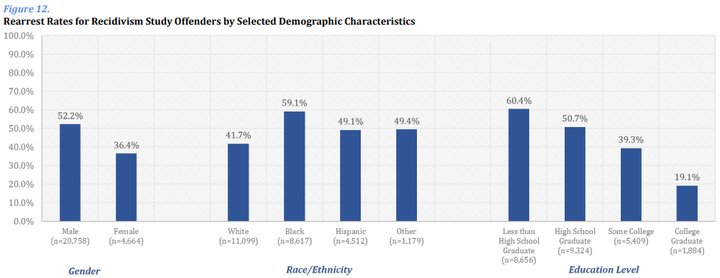Yes. I did indeed mean more equality
Women were less likely to be detained before trial. They were 46 percent less likely than men to held in jail prior to a trial.
Women who were released on bond were given lower bond amounts. Their bonds were set at amounts that were 54 percent lower than what men were required to pay.
Women were 58 percent less likely to be sentenced to prison.
For defendants who were sentenced to prison, there generally was no gender disparity in the length of the sentence. There were disparities in sentencing for some individual types of crime, however. For example, female defendants convicted of theft received longer prison sentences than male defendants convicted of theft. Women convicted of “other property offenses” – a category of crimes that includes arson, receiving stolen property and breaking and entering — received shorter prison sentences.
Black female defendants were, in some ways, treated differently than white female defendants. Black women were assigned higher bond amounts and were more likely to be sent to prison than white women. Women of both races were equally likely to be released prior to trial.
Women who were released on bond were given lower bond amounts. Their bonds were set at amounts that were 54 percent lower than what men were required to pay.
Women were 58 percent less likely to be sentenced to prison.
For defendants who were sentenced to prison, there generally was no gender disparity in the length of the sentence. There were disparities in sentencing for some individual types of crime, however. For example, female defendants convicted of theft received longer prison sentences than male defendants convicted of theft. Women convicted of “other property offenses” – a category of crimes that includes arson, receiving stolen property and breaking and entering — received shorter prison sentences.
Black female defendants were, in some ways, treated differently than white female defendants. Black women were assigned higher bond amounts and were more likely to be sent to prison than white women. Women of both races were equally likely to be released prior to trial.



